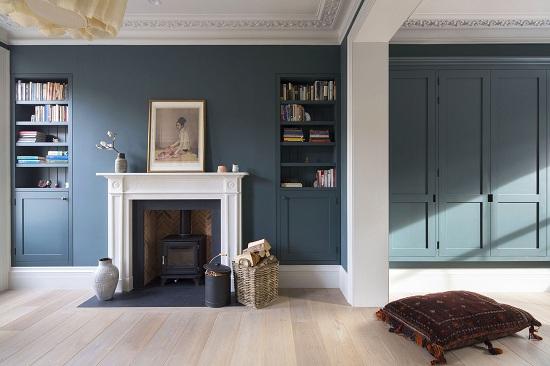Owning an old house is like owning a piece of history, but it often comes with its share of maintenance and restoration challenges. One common issue that owners of old houses face is the deterioration of walls over time. Whether it’s cracked plaster, peeling paint, or general wear and tear, restoring the walls in an old house requires careful attention and the right approach. Here’s a comprehensive guide on how to restore the walls in an old house and bring back their former glory.

A Guide to Restoring Walls in Old Homes
-
Assess the Damage
Before you begin any restoration work, thoroughly assess the condition of the walls. Look for signs of cracks, holes, dampness, and areas where the paint or plaster is peeling. This assessment will help you understand the extent of the damage and plan the restoration process accordingly.
-
Prepare the Walls
Start by preparing the walls for restoration. Remove any loose or peeling paint using a scraper, and fill in cracks and holes with an appropriate filler. Sand down uneven surfaces to create a smooth and even base for the restoration work.
-
Address Dampness and Mold
Old houses are more susceptible to dampness and mold, which can compromise the integrity of the walls. Before proceeding with any cosmetic restoration, address these underlying issues. Identify the source of dampness and ensure proper ventilation and drainage. Treat any mold growth with suitable cleaning agents to prevent further spread.
-
Repair the Plaster
If your old house has plaster walls, repairing them can be a meticulous task. Gently remove damaged sections of plaster using a chisel or hammer, being careful not to cause more damage. Once the damaged plaster is removed, apply a plaster patching compound to fill in the gaps. Allow the compound to dry and then sand it smooth for a seamless finish.
-
Choose the Right Paint
Selecting the right paint is crucial for an old house restoration. Opt for high-quality, breathable paint that allows the walls to naturally regulate moisture. For historic accuracy, research the original paint colors used in your house’s era. Test a small section before painting the entire wall to ensure you’re satisfied with the color and finish.
-
Apply Paint with Care
When applying paint, use even brush strokes or a roller for a consistent finish. Depending on the condition of your walls, you might need multiple coats to achieve full coverage. Allow each coat to dry thoroughly before applying the next one.
-
Preserve Historic Features
If your old house has unique architectural details such as molding, trim, or decorative elements, take care to preserve and restore them. Use appropriate techniques to repair or recreate these features, maintaining the historical integrity of the house.
-
ConsiderWallpaper or Textured Finishes
If the walls have extensive damage that’s challenging to repair, consider using wallpaper or textured finishes. These options can not only cover imperfections but also add character to the space. Choose patterns and textures that complement the overall aesthetic of your old house.
-
Maintain Regularly
After restoring the walls, make it a point to maintain them regularly. Inspect for any new signs of damage, such as cracks or peeling paint, and address them promptly. Regular maintenance will help prolong the life of your restored walls and prevent future extensive restoration projects.
Restoring the walls in an old house requires patience, attention to detail, and a commitment to preserving its historical charm. By following these steps, you can revive your old house’s walls and create a living space that beautifully marries the past and the present.